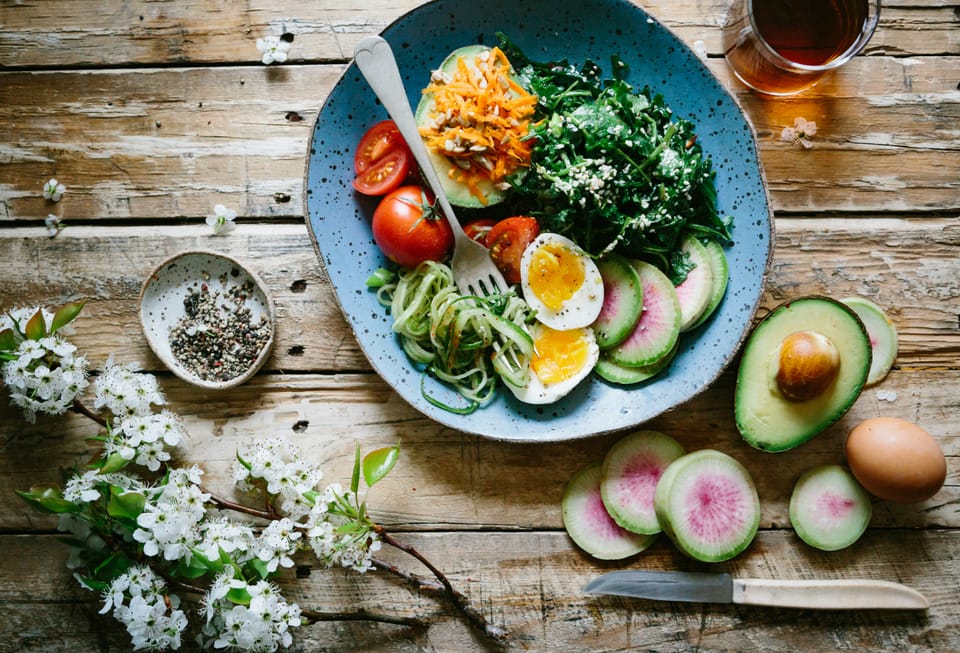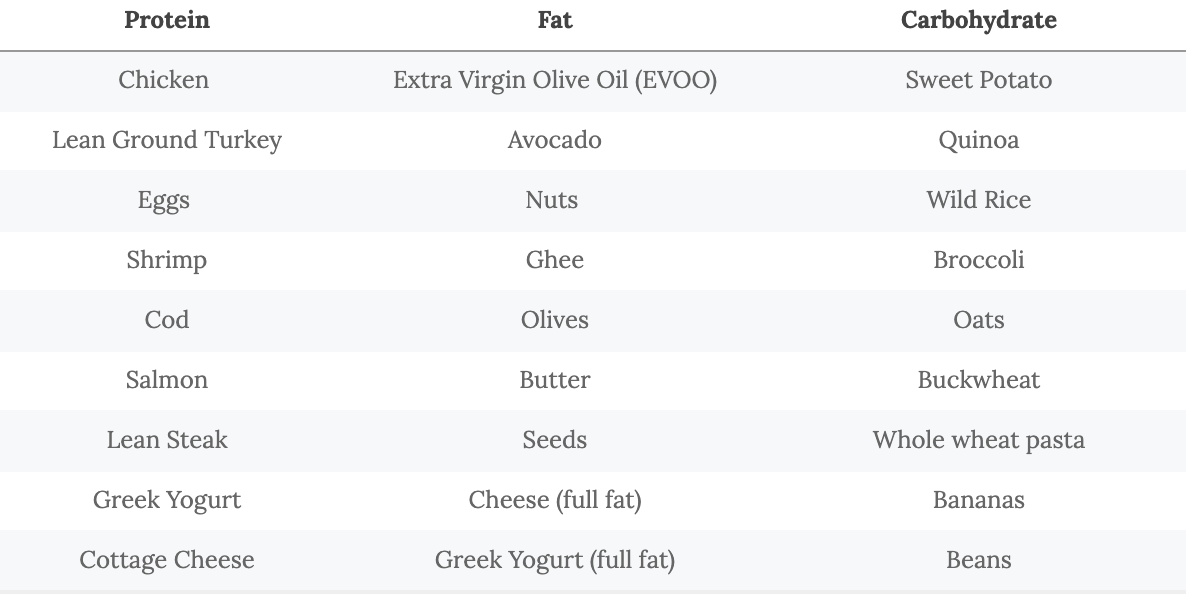Balanced Meal Ideas

A balanced meal is a combination of three essential components: lean proteins, healthy fats, and fiber-rich carbohydrates (often in the form of vegetables or whole grains). This approach also emphasizes variety, ensuring meals are nutritious and satisfying without feeling restrictive.
For example:
- Lean Proteins include foods like chicken, fish, eggs, tofu, or beans, which help build and maintain muscle. Protein generally keeps you feeling fuller for longer since it takes your body time to digest and break down.
- Healthy fats from sources like avocados, nuts, seeds, or olive oil are good for brain health, hormone function, and keeps you satiated (the feeling of being satisfied and no longer hungry).
- Fiber-rich carbohydrates include vegetables, whole grains, and fruits that help your digestion and also keep you full. They can also reduce blood sugar spikes especially when eating a carb-heavy meal.
You’ll notice that each of these components is described as keeping you full—but that effect depends on combining foods to ensure you have a “balanced” meal. Take, for example, eating an apple alone. Apples offer a variety of nutrients, contain fiber, and are generally considered “healthy.” However, eating an apple by itself can spike blood sugar levels and might not leave you feeling truly satisfied if you’re hungry.
It’s not the end of the world if you eat an apple by itself, but there are ways to make it a more satisfying snack by adding protein and fat. Instead of eating a whole apple, consider having half an apple with some Greek yogurt (high in protein) and walnuts (a healthy fat). This way, your snack includes carbohydrates, protein, and fat, which together help keep you fuller for longer.
By sticking to this easy formula—protein + healthy fat + fiber-rich carb—you can mix and match ingredients to create quick, nourishing meals or snacks that fit your schedule.

Healthy Meal Ideas:
- Grilled chicken + roasted sweet potato + steamed broccoli + butter
- Scrambled eggs + whole grain bread + guacamole + salsa
- Smoothie in a bowl + seeds + berries + almond flakes
- Baked cod + lemon juice + extra-virgin olive oil (EVOO) + roasted asparagus + wild rice
- Roasted sweet potato + black beans + avocado + cojita
- Turkey meatballs + zucchini noodles + tomato sauce + EVOO
- Greek yogurt + blueberries + seeds + shredded coconut
- Quinoa Bowl + roasted veggies + edememe + avocado + peanut sauce
- Canned sardines + olives + capers +diced cucumber + lemon + EVOO
- Poached eggs + sauteed spinach + onions + ghee
Managing Cravings
Nobody's perfect, and your diet won't be either. Don't put too much pressure on being perfect or ultra-restrictive. Restriction over time tends to lead to binging on the very foods you've been denying yourself. Instead, incorporate your favorite foods—"healthy" or not—into your regular rotation so you satisfy your cravings.
For example, if you really like tortilla chips and could easily eat half a bag in one sitting, try this: instead of snacking on chips while making dinner, include a serving on your plate once you're ready to eat your main meal. A serving is typically 10–15 chips, or about a handful. Including the food you’re craving as part of your meal offsets the chances of overeating that specific item, especially if you pair the chips with a serving of protein and fat—for example, shrimp tacos with guacamole.
Don't know where to start?
My first piece of advice is to start identifying what is a protein, carb, and fat in your meals or snacks. Notice how you feel after you have a snack or meal that is dominant in one macro (protein, fat, or carb). Ask yourself, does this make me feel full? Tired? Still hungry? Satisfied? Notice how you feel during the meal, right after the meal, and 3-4 hours after finishing the last bite.
Lastly, know that your body is constantly changing – what worked for you when you were younger may no longer work today and that is OK! Stay curious and present in your health journey.